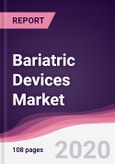What are Bariatric Devices?
Bariatric science is the related to the treatment of people having extreme obesity and methods for its prevention. This is done by performing a surgery on the stomach or intestines of the patient to help him lose and control weight. Bariatric surgery is an option for people who have a body mass index (BMI) more than normal usually above 40. They are of two basic types’ i.e. restrictive surgeries and mal-absorptive or restrictive surgeries. Restrictive surgeries work by physically restricting the size of the stomach and slowing down digestion. Mal-absorptive/restrictive surgeries involves physical removal of parts of the digestive path using bariatric instruments, in addition to restriction of the stomach size, the surgery interferes with absorption of calories.
There are various instruments and device which surgeons have to take into use while performing these highly sophisticated operations those are called Bariatric Devices. They include various types of equipment such as knives, synthetic bands that are used, needles, etc. which all are used for treatment in Bariatric surgeries.
Market Research and Market Trends of Bariatric Devices Ecosystem
Gastric bypass uses a technique that combines both restrictive and mal absorptive approaches. The proximal portion of the stomach is used to create an egg-sized pouch that is connected to the intestine in a location that bypasses about 2 feet of normal intestine. The food intake capacity is limited by the size of the pouch and the size of the opening between the pouch and the intestine. In U.S. markets, it is the most popular and consists about 80% of all weight loss surgeries.
The Transoral Gastroplasty (TOGA) is a latest technique which has led to significant improvement in minimally-invasive bariatric surgery. Instead of making incisions in the abdominal wall, it offers incision-less option by combining two flexible endoscopic staplers passed through the mouth that are used to create a small restrictive pouch in the stomach.
Several noninvasive procedures and devices are under development which offer alternative solutions for patients who are hesitant to pursue standard surgical approaches. These procedures may be used for primary treatment of obesity, early intervention for patients approaching morbid obesity, temporary management prior to bariatric surgery, or revision of bypass surgery associated with weight regain.
More than 225,000 Americans who are 100 pounds overweight and unable to lose weight through improvement or changes in their dieting habits and hence are expected to undergo bariatric surgery. It has been observed that the people undergoing bariatric procedure are able to lose more than 60% of their excess weight. A majority experience resolution of their diabetes and high blood pressure and a reduction in their cholesterol. This indicates strong demand for bariatric devices in near future.
Who are the Major Players in Bariatric Devices market?
The players profiled in the report include Medtronic, Allergan, Inc., C.R. Bard, Enteromedics, Inc., GelesisAllergan, Inc., Aspire Bariatrics, Cousin Biotech, Covidien Plc, Endogastric Solutions, Inc., Silimed Ltd
What is our report scope?
The report incorporates in-depth assessment of the competitive landscape, product market sizing, product benchmarking, market trends, product developments, financial analysis, strategic analysis and so on to gauge the impact forces and potential opportunities of the market. Apart from this the report also includes a study of major developments in the market such as product launches, agreements, acquisitions, collaborations, mergers and so on to comprehend the prevailing market dynamics at present and its impact during the forecast period 2018-2024.
Key Takeaways from this Report
Evaluate market potential through analyzing growth rates (CAGR %), Volume (Units) and Value ($M) data given at country level – for product types, end use applications and by different industry verticals.
Understand the different dynamics influencing the market – key driving factors, challenges and hidden opportunities.
Get in-depth insights on your competitor performance – market shares, strategies, financial benchmarking, product benchmarking, SWOT and more.
Analyze the sales and distribution channels across key geographies to improve top-line revenues.
Understand the industry supply chain with a deep-dive on the value augmentation at each step, in order to optimize value and bring efficiencies in your processes.
Get a quick outlook on the market entropy – M&A’s, deals, partnerships, product launches of all key players for the past 4 years.
Evaluate the supply-demand gaps, import-export statistics and regulatory landscape for more than top 20 countries globally for the market.
Table of Contents
Methodology

LOADING...








